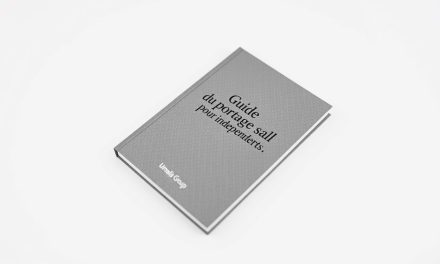Welcome! Let’s talk about a topic that matters more than ever. The line between our jobs and personal time has become blurry. Many people feel constantly connected and struggle to switch off.
Finding a good work-life balance is a top priority for modern workers. It can feel challenging, but it is absolutely possible. This guide offers friendly, practical steps to help you create a healthier lifestyle.
This isn’t just a trendy phrase. It’s a fundamental need for your physical health and mental wellness. When we work too much, it can lead to stress and burnout. In fact, companies that support this kind of balance see much lower employee turnover.
You might feel overwhelmed by long hours. This article will show you why balance matters and how to achieve it. We’ll explore strategies for both individuals and organizations to build a more sustainable approach to work and life.
Table of Contents
Key Takeaways
- Blurred lines between professional and personal life make achieving harmony difficult.
- A healthy equilibrium is essential for reducing stress and preventing burnout.
- Practical strategies can help you manage your time and responsibilities effectively.
- Supportive company policies, like flexible schedules, contribute significantly to well-being.
- Creating a sustainable lifestyle is an ongoing process that requires conscious effort.
- Small, consistent steps can lead to significant improvements in your overall happiness.
Understanding Work-Life Balance and Its Importance
Modern work-life balance is less about splitting hours evenly and more about setting sustainable boundaries. It means creating clear lines between your job and your personal life.
This approach moves beyond old ideas that no longer fit today’s world. The goal is to ensure you don’t work too much, not to achieve a perfect 50/50 split of your time.
Defining Work-Life Balance in Today’s World
So, what does a healthy balance look like now? Research points to a sweet spot for weekly work hours. Studies show that working between 38 and 45 hours per week leads to the best results for well-being and output.
A Stanford study found that productivity drops after about 50 hours. Working beyond 55 hours per week often becomes counterproductive. This shows that more time at the desk doesn’t equal better results.
Employee priorities have also shifted dramatically. An Aviva study revealed a major change since the pandemic. Now, 41% of workers choose a job for its positive work-life balance, compared to 36% who prioritize salary.
Why Balance is Crucial for Health and Productivity
Maintaining this balance is essential for everyone. It’s not just a personal perk; it’s a smart business strategy. Engaged, well-rested teams perform better.
Time away from work allows your brain to recharge through sleep, exercise, and social connections. This leads to better focus and creativity when you are on the job. A proper balance directly supports your physical and mental health, reducing burnout and boosting long-term success.
The Impact of Extended Work Hours on Health and Performance
Extended hours at the office don’t just drain energy—they create measurable risks to physical and mental wellness. Both employees and organizations pay a price when boundaries blur.

Mental and Physical Health Implications
A sobering UCL study tracked over 10,000 white-collar workers. Those working three extra hours daily faced a 60% higher heart risk. Chronic stress from overwork triggers serious conditions.
This includes strokes, respiratory issues, and weakened immunity. The mental health toll is equally concerning. Extended hours contribute to anxiety, depression, and eventual burnout.
Research shows vacations significantly reduce psychological distress. Time away protects mental health.
The Business Case: Engagement and Retention
There’s a compelling business argument for reasonable hours. Tower Perrin’s global survey revealed a dramatic performance gap.
Companies with highly engaged teams saw 19.2% income growth. Low-engagement firms declined by 32.7%. That’s a 52% performance difference.
Replacing staff costs around £30,000 per person. It takes 28 weeks for new hires to reach full productivity. Supporting employee well-being through proper balance is simply smarter business.
| Health Impact | Business Consequence | Preventive Solution |
|---|---|---|
| 60% higher heart risk | Increased absenteeism | Reasonable work hours |
| Chronic stress levels | 32.7% income decline | Regular vacation time |
| Mental health issues | £30,000 replacement costs | Clear work boundaries |
Modern Challenges in a Digitally Connected Workplace
The very devices designed to make work easier have created an unprecedented challenge for personal time. Our smartphones and laptops keep us linked to the office long after the official day ends.

Navigating Technology and the Always-On Culture
This constant connectivity fuels an « always-on » culture. Employees feel pressure to respond to messages during dinner or even late at night. The line between clocking out and truly disconnecting has vanished.
Remote work, while flexible, often means your home is also your office. There is no physical separation. This makes it incredibly difficult to establish a healthy balance.
Back-to-back virtual meetings and constant notifications fracture focus. They extend work hours into personal time. This digital intrusion creates significant stress and can lead to burnout.
For global teams, the challenge is even greater. With colleagues in different time zones, it can feel like it’s always business hours. This intensifies the pressure to be constantly available.
While technology offers amazing flexibility, it requires conscious boundaries. Without them, work can invade every part of life. The key is using technology wisely to support your journey toward finding your ideal equilibrium.
Practical Tips and Strategies for Better Work-Life Balance
Building better work-life dynamics involves both organizational support and personal practices. These concrete steps help create environments where people can thrive professionally while protecting their personal time.

Encouraging Time Off and Regular Breaks
Vacation days are essential for maintaining health and preventing burnout. A « use it or lose it » policy ensures workers actually take their allocated time off. This approach creates a culture where disconnecting is expected.
Regular breaks throughout the work day are equally important. The human body needs movement and mental refreshment. Consider installing game rooms or organizing walking meetings.
Technology can support well-being when used intentionally. Mindfulness app subscriptions help team members manage stress during demanding periods.
Embracing Employee Feedback for Innovative Policies
Employers should regularly seek input from their team. Anonymous surveys provide honest data about what changes would improve daily work experiences.
Regular check-ins create ongoing dialogue about time management and workload. This collaboration leads to policies that genuinely support productivity and personal well-being.
| Strategy | Implementation | Expected Outcome |
|---|---|---|
| Time Off Encouragement | « Use it or lose it » vacation policy | Reduced burnout, renewed energy |
| Daily Break Support | Walking meetings, game rooms | Improved focus, less stress |
| Employee Feedback Systems | Anonymous surveys, regular check-ins | Tailored solutions, higher engagement |
Embedding Work-Life Balance in Company Culture
The most effective workplace cultures don’t just talk about boundaries—they live them consistently. True integration happens when well-being becomes part of your organizational DNA, not just a policy in a handbook.

Leadership by Example and the Right to Disconnect
Leaders must model the behavior they want to see. If managers send emails after hours while telling their team to disconnect, it sends mixed messages. This creates pressure to match extended hours.
France’s innovative « Right to Disconnect » law provides a valuable framework. It legally protects personal time from work intrusion. This regulation helps employers establish clear boundaries that support employee health.
Leveraging French Regulations to Foster a Healthier Environment
Respecting privacy during non-work hours allows people to recharge fully. Companies that embrace these principles gain a competitive edge. They become magnets for talent seeking sustainable careers.
Making « don’t work too much » an explicit value creates alternatives to the « always on » culture. This approach benefits the entire business at all levels. It shows genuine commitment to both professional success and personal life satisfaction.
Conclusion
Our careers represent a significant part of our lives, making a healthy approach to professional demands essential. This isn’t just about personal comfort; it’s a strategic necessity for both individual wellness and organizational success.
Research consistently shows that limiting work to 38-45 hours per week, taking real breaks, and disconnecting after hours leads to better outcomes. Protecting personal time isn’t a luxury—it’s the foundation for creativity and peak performance.
For workers and leaders alike, the path forward is clear. By setting firm boundaries and respecting mental health, we build more resilient and productive environments. This commitment reduces chronic stress and safeguards long-term health.
Start with one small change. Protect your evening, take a full lunch break, or encourage your team to disconnect. Every step toward a better work–life integration counts. Remember, sometimes the best way to enhance your work is to step away from it.
FAQ
What exactly does work-life balance mean?
It’s about finding a healthy mix between your job and personal life. This means having enough time for family, hobbies, and rest without feeling overwhelmed by professional duties.
Why is achieving a good balance so important?
A proper balance helps reduce stress and prevents burnout. It leads to better mental health, higher job satisfaction, and makes you more productive when you are working.
How can long hours at my job affect me?
Working extended hours can lead to increased stress levels and fatigue. Over time, this can harm both your physical and mental well-being, impacting your overall performance.
What are some simple ways to improve my daily routine?
Start by taking regular breaks during the day and fully disconnecting during your time off. Setting clear boundaries between work and personal life is a powerful first step.
How can technology help or hurt my efforts?
Technology keeps us connected but can make it hard to switch off. Using tools like « do not disturb » modes and scheduling email checks can help you manage the always-on culture.
What role do employers play in supporting their team?
Employers can create a supportive environment by encouraging time off, respecting personal time, and listening to employee feedback. Leadership that promotes well-being sets a positive example.
Are there successful examples of companies promoting better habits?
Yes, many forward-thinking businesses now offer flexible schedules, remote options, and wellness programs. These initiatives show a commitment to employee health and often lead to a more engaged team.





